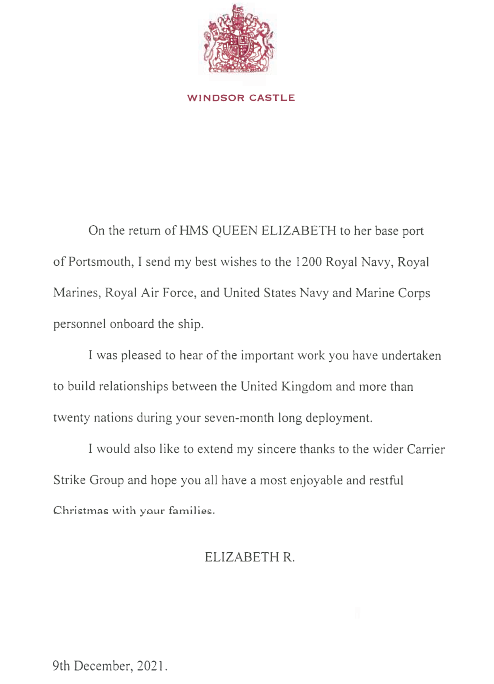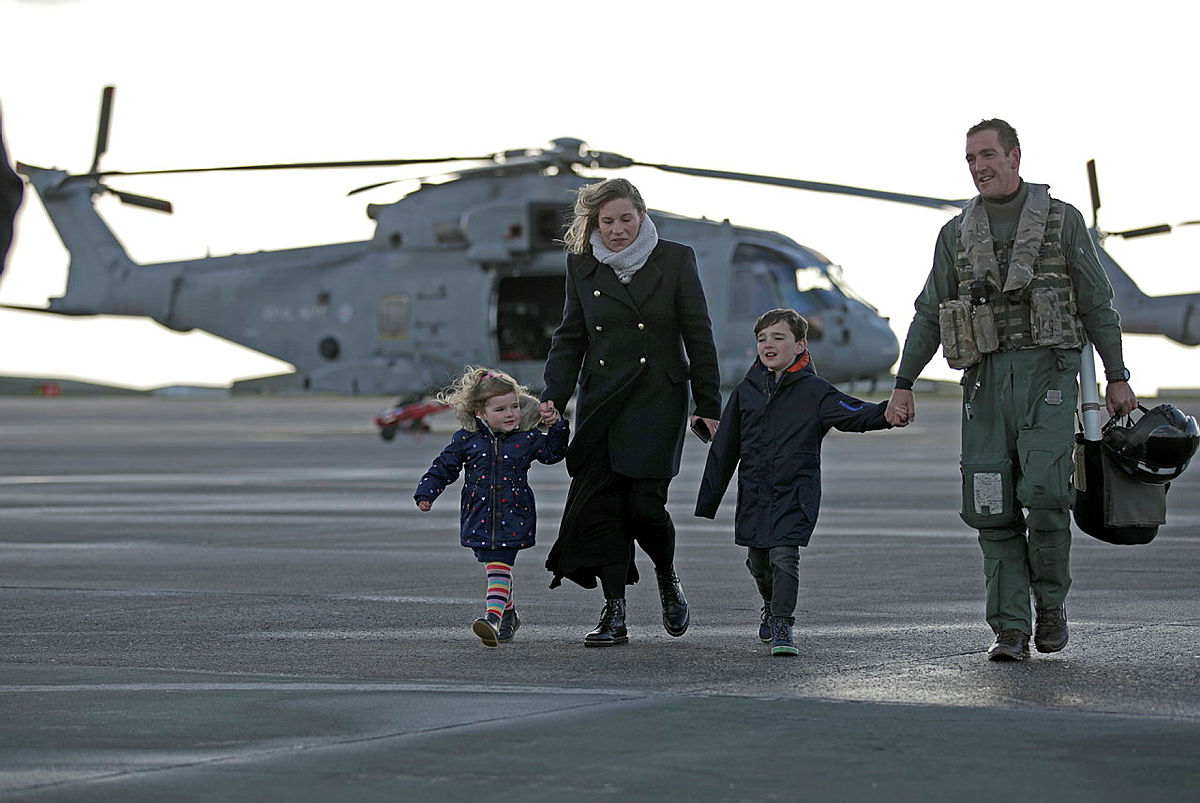
HMS Queen Elizabeth (R08) and escorts of the Royal Navy Carrier Strike Group 21 (CSG 21) returned to their home ports in HMNB Devonport and HMNB Portsmouth marking the end of its seven-month maiden deployment.
CSG 21 sailed 49,000 nautical miles to the Indo-Pacific and back. CSG 21 ships arriving home today were aircraft carrier Queen Elizabeth, destroyers HMS Diamond (D34) and HMS Defender (D36), frigates HMS Richmond (F239) and HMS Kent (F78) and replenishment ship RFA Fort Victoria (A387).
The remaining ships of the CSG 21 had returned home earlier. Destroyer USS The Sullivans (DDG-68) detached from the group in late October and arrived home in Mayport, Fla., on Nov. 24. Meanwhile, Dutch frigate HNLMS Evertsen (F805) detached from the group on Dec. 2 and arrived home at Nieuwe Haven Naval Base, Den Helder on Dec. 5. U.K. replenishment ship RFA Tidespring (A136), which was replaced as the CSG’s tanker by RFA Tidesurge (A138) on Nov. 20, returned home to Portland Port, Devon on Dec. 2. The U.K rotated its Astute-class submarines for the deployment, with one submarine accompanying the group at various periods.
The U.K. air elements of CSG 21 flew home yesterday and today, with the Merlin helicopters of 820 Naval Air Squadron and 845 NAS returning to Royal Naval Air Station Culdrose and RNAS Yeovilton, respectively, yesterday. The Wildcat helicopters of 815 NAS returned to RNAS Yeovilton yesterday. The Royal Air Force 617 Squadron “The Dambusters” arrived home at RAF Marham today.
The “Wake Island Avengers” of U.S. Marine Fighter Attack Squadron (VMFA) 211 arrived home at Marine Corps Air Station Yuma yesterday after departing from CSG 21 last month. The squadron had been deployed aboard Queen Elizabeth together with 617 Squadron since the end of April 2021. A U.S. Marine Corps release stated that during the Royal Navy carrier’s initial operating deployment, VMFA-211 and the 617 squadron completed more than 1,278 sorties, flew more than 2200 hours, and conducted 44 combat missions in support of the counter-ISIS mission — Operation Inherent Resolve.

“Deploying with CSG-21 was a premier opportunity for our Marines to train alongside our allies and for the Marine Corps to garner valuable lessons from operating on allied shipping in a combined environment across multiple theaters of operation,” Maj. Gen. Bradford Gering, the commanding general of 3rd Marine Aircraft Wing, said in the news release. “VMFA-211 continues to lead the charge in F-35 training initiatives that directly enhance future warfighting capabilities of Marine aviation.”
VFMA-211 was the first F-35B squadron to deploy as a 10-jet squadron, as outlined in the Marine Corps Commandant’s Planning Guidance, which lays out the strategic vision for the Marines.
“The deployment with CSG-21 was extremely successful for VMFA-211 in many ways, from conducting combat operations from a foreign allied vessel to demonstrating interoperability with our U.K. partners, along with multiple other strike groups, in the face of near-peer adversaries,” Lt. Col. Andrew D’Ambrogi, the commanding officer of VMFA-211, said in the release. “The hard work and fortitude the Marines demonstrated over the past eight months have been nothing less than impressive having just executed the first 10-plane F-35B operational shipboard deployment.”
The ten F-35Bs of the squadron flew to Naval Station Rota on Nov. 24, with the remainder of the squadron disembarking from Queen Elizabeth on Dec. 2, when the carrier made a port call in Rota. On Dec. 5, the main body of personnel and equipment flew from Naval Station Rota to MCAS Yuma. The aircraft flew into MCAS Cherry Point, N.C. and subsequently flew to MCAS Yuma.

A U.K Ministry of Defence release on the ending of the CSG 21 deployment stated that the strike group engaged with 44 countries and its air wing flew 4,723 flight hours, with 1,290 of those at night. The air wing also exercised with 64 different aircraft types from 17 nations during the deployment, the release said.
In other developments, the U.K Ministry of Defence announced on Dec. 8 that the RAF F-35B that crashed while operating off Queen Elizabeth on Nov. 17 has been recovered, though it did not provide details on the recovery efforts, other than thanking Italy and the United States for support in the recovery operation.





